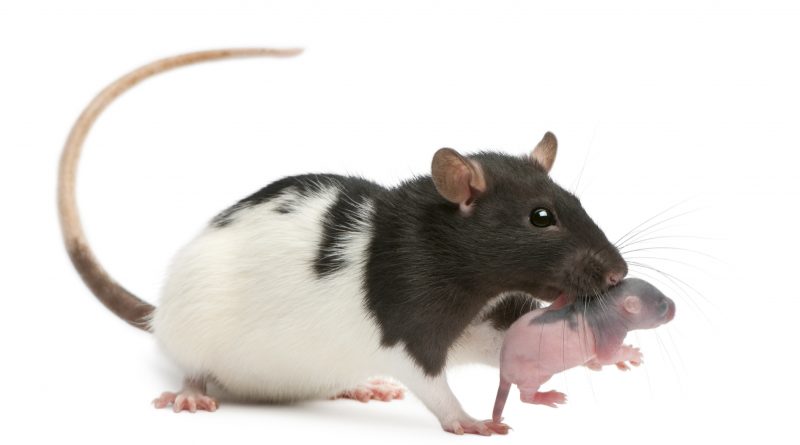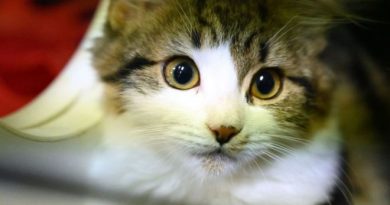Ghost Mice: The Plight of Invisible Lab Animals
Note from ADAV: While this article reflects the situation in the US, the lack of transparency and regulation is just as bad for all the animals in labs here in Canada. Right now the Canadian Council on Animal Care (CCAC) is drafting its first-ever animal welfare guidelines, after 53 years in existence!
Many who believe that animal use in research is tightly regulated would be shocked to learn that these protections only apply to a lucky few.
Legislators and scientists involved in animal experimentation have expressed broad support for a set of goals known as the three R’s: Replacement, Reduction, and Refinement. The stated intention is to replace live animals with nonliving research subjects when possible, to reduce the number of animals subjected to experiments, and to refine experiments to cause less pain and distress. To this end the Animal Welfare Act (AWA) was passed in 1966, affording protection and oversight to animals used in laboratories in the U.S. Unfortunately, and incomprehensibly, the AWA excludes several of the most commonly used lab animals, including rats and mice. This allows legislators to tout the fact that the AWA covers almost all species, while glossing over the fact that it actually excludes almost all individual animals used in laboratories. The exclusion of rats and mice from AWA oversight means there is no way of ascertaining how many of these animals are being used in experiments, and no way of gauging whether or not the industry is making progress toward its stated goal of reduction.
This situation is maddening for advocates, who have no way of finding out how many animals are being experimented upon, which of their efforts are most effective at reducing this number, and how the number is changing over time. Advocates need reliable data to inform their advocacy priorities. They need consistent longitudinal data to measure progress. They need the numbers to be publicly available so that legislators, experimenters, and the public can be held to account for failing to provide even minimal protection for the vast majority of animals used in labs.
In an effort to at least have a good estimate of the number of rats and mice in use in U.S. lab experiments, this study considered three different approaches: Add up daily estimates made by labs, make an estimate based on data from other countries, or build a national estimate from a sample group of labs.
The first approach would make use of daily census estimates required by the National Institutes of Health (NIH) from labs receiving grants (and therefore subject to its oversight). The problem with this approach is that the estimates are rough, based on the number of cages multiplied by whatever the lab determines is the average number of animals per cage. There is no process in place to ensure that this multiplication factor is accurate, different labs use different accounting methods, and a lab may change its accounting method at any time without indicating this. In reviewing counts obtained by this method, the author found some to be almost certainly inaccurate, unless the lab in question saw no purchases, births, or deaths in an entire year.
The second approach would involve examining the more complete data from other countries to determine what fraction of their lab animals are rats and mice, and then multiply this fraction by the known U.S. number of AWA-covered animals to yield an estimate of U.S. lab mice and rats. A few difficulties arise, however. Because other countries’ labs operate under different regulatory structures, their proportions of lab animal species likely differ from those in the U.S. That would explain the implausibly low estimate of rats and mice that this method generates. To further complicate matters, different countries use different systems of classification related to the types of experiments done on animals, so data from other countries don’t map neatly onto U.S. data.
The author settled on the third approach: Collect data from a sample of U.S. institutions and multiply the proportion of rats and mice at these institutions by the publicly available numbers of AWA-covered animals at all U.S. institutions. This approach too has significant limitations. For one thing, the author had to collect their data from public academic NIH grant recipient institutions, because others are not required to disclose this data. This could lead to a selection bias (only institutions that can pass inspections are in the running for these grants) or fail to reflect the animal use patterns of private institutions and corporate laboratories. However, aware of these limitations, the author has come up with an appropriately cautious estimate.
Through a combination of voluntary responses and Freedom of Information Act requests, the author obtained animal use data from 16 of the 30 top NIH grant recipients. The author determined that of the mammals being used in these labs, ≈99.3% are rats and mice. If this same proportion holds true for all U.S. laboratories, then there are likely 111.5 million rats and mice being used in experiments in the U.S. every year. Furthermore, based on the sample data, an estimated 44.5 million of these rats and mice undergo experiments that are painful or distressing each year. A caveat here is that the metrics for how painful or distressing an experiment is are compromised due to pain rating inconsistencies and human inability to accurately gauge rodent pain. Due to the method the author had to use to arrive at these estimates, the percentage of lab animals that are rats and mice could be anywhere between 97.3% and 99.6%, which yields a range for the estimated total number of animals between 21.1 million and 195 million.
While it is not exact, the estimate tells us two very important things:
- The number of rats and mice being used in largely unregulated and sometimes painful lab experiments in the U.S. is very large.
- The fact that even a careful analysis yields such a wide estimated value range reveals a desperate need for better access to more complete data.
Going forward, this estimate can serve as a benchmark and be compared to future estimates generated by the same method and with the same assumptions. These estimates can serve as a stop-gap solution to inform advocacy efforts until more precise animal use data becomes available.
To make this data available, advocates might lobby congress to amend the AWA to reflect the fact that rats and mice are, indeed, animals deserving of consideration, or at least being counted. They can also appeal to the NIH to standardize reporting methods across their grant-receiving institutions, and to publish aggregated animal use data.
Pearson’s law states, “That which is measured improves. That which is measured and reported improves exponentially.” If the scientific community is at all sincere in their intent to reduce and replace living animals in their research, it is high time they begin to keep and report accurate records of those animals, and it is the duty of legislators to move beyond mere lip service to their regulatory responsibility and ensure that this happens.




